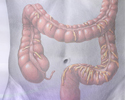Health screenings for women age 65 and older
Health maintenance visit - women - over age 65; Physical exam - women - over age 65; Yearly exam - women - over age 65; Checkup - women - over age 65; Women's health - over age 65; Preventive care exam - women - over age 65You should visit your health care provider from time to time, even if you are healthy. The purpose of these visits is to:Screen for medical issuesAssess your risk for future medical problemsEncourage a healthy lifestyleUpdate vaccinations and other preventive care servicesHelp you get to know your provider in case of an illness
The Basics
Tests for eye Cancer
Health screenings for women age 65 and older
Health maintenance visit - women - over age 65; Physical exam - women - over age 65; Yearly exam - women - over age 65; Checkup - women - over age 65; Women's health - over age 65; Preventive care exam - women - over age 65You should visit your health care provider from time to time, even if you are healthy. The purpose of these visits is to:Screen for medical issuesAssess your risk for future medical problemsEncourage a healthy lifestyleUpdate vaccinations and other preventive care servicesHelp you get to know your provider in case of an illness
The Basics
Tests for eye Cancer
Health screenings for women age 65 and older
Health maintenance visit - women - over age 65; Physical exam - women - over age 65; Yearly exam - women - over age 65; Checkup - women - over age 65; Women's health - over age 65; Preventive care exam - women - over age 65You should visit your health care provider from time to time, even if you are healthy. The purpose of these visits is to:Screen for medical issuesAssess your risk for future medical problemsEncourage a healthy lifestyleUpdate vaccinations and other preventive care servicesHelp you get to know your provider in case of an illness
The Basics
Tests for eye Cancer
Review Date: 8/1/2023
Reviewed By: David C. Dugdale, III, MD, Professor of Medicine, Division of General Medicine, Department of Medicine, University of Washington School of Medicine. Also reviewed by David Zieve, MD, MHA, Medical Director, Brenda Conaway, Editorial Director, and the A.D.A.M. Editorial team. Internal review and update on 08/01/23. Editorial update: 09/26/2024.



